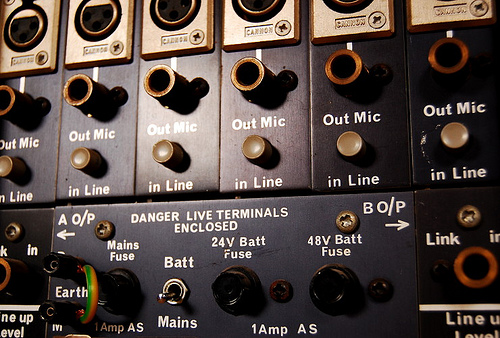ATSC Audio Seminar: How Loud is Too Loud?

RANCHO MIRAGE, CALIF: A great deal of emphasis has been placed on controlling renegade audio loudness levels through dialnorm, but variations in volume are a necessary part of the dramatic répertoire. Dynamic range control determines the extremes of that variation. It must be properly channeled through the broadcast distribution chain so that home viewers retain a degree of control over it. Some may want the full effect of teeth-jarring explosions on their 5.1 home theater systems, said Ken Hunold of Dolby.
Hunold covered DRC at the ATSC Audio Seminar during the HPA Technology Retreat Tuesday. He described how DRC commands are delivered via metadata that calculate “gain” words in the encoder. Preset DRC profiles exist for Music Light, Music Standard, Film Light, Film Standard and Speech, he said. “Either of the Standard profiles would be fine,” Hunold said.
As determined by gain words, there are two types calculated in the encoder--line and RF. Line-mode DRC, or “dyning,” is “suitable for baseband, line-level interconnection of consumer devices” for slightly reducing program DRC, Hunold said. RF is a more aggressive calculation used by default in TVs and set-top boxes.
Yet another option is a profile defined by “none.” If “none” is selected at the encoder, DRC values are not calculated at all, Hunold said.
“DRC is subsequently unavailable to the consumer,” he said, effectively debilitating ‘late night’ or ‘midnight modes’ in receivers. Conversely, no DRC control can cause distortion in TV sets with smaller speakers.
“DRC must be managed somehow,” Hunold said. Research indicates that folks are generally comfortable with a dynamic range of around 7 dB. The key is to assure that the viewer can ultimately undo the parameter if they so choose, to perhaps get the full effect of the transition from a quiet love scene to an orchestrated carpet jingle.
Such content shifts, particularly between programs and commercials, were instrumental in driving the substantial effort to tame audio with technology. It’s a bit like stitching together bits of naugahyde and tulle. It just won’t be entirely seamless. (“Program Interchange: Managing interstitial audio leaps”)
-- Deborah D. McAdams
(Image by Andrew Back)
The professional video industry's #1 source for news, trends and product and tech information. Sign up below.
